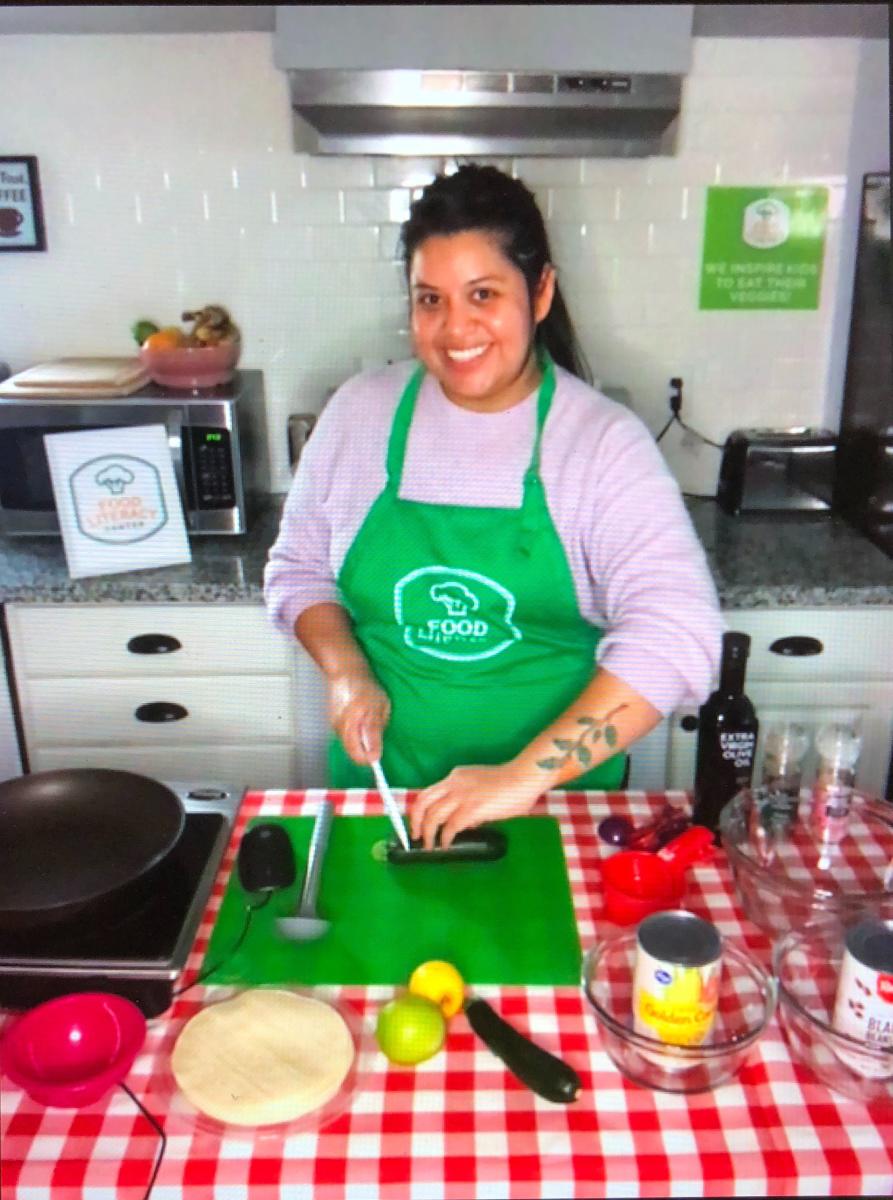In the current climate where coronavirus has caused so many to stay home and avoid nonessential trips, millions of Americans are cooking at home more than ever, and the Sacramento-based Food Literacy Center is providing a free online resource to get kids — and their parents — focused on simple, healthy eating with easily accessible ingredients.
Food Literacy Center was founded in 2011 with a simple mission: to inspire kids to eat their vegetables, said founder and Chief Food Genius Amber Stott.
Listen to "Pioneering Food Literacy in America's Farm-to-Fork Capital with Amber Stott" on Spreaker.
Listen to Amber Stott discuss Food Literacy Center on the Visit Sacramento Podcast.
Typically, the program goes into schools and teaches simple cooking with a focus on using healthy ingredients such as fruits and vegetables.
But in mid-March, that all changed.
“They closed the schools on a Thursday, and by Monday morning at 9 a.m., we were planning to roll this out, and by Wednesday we had launched our first lesson,” Stott said. “It was us trying to be responsive to a need we knew already existed, and how do we deliver this service in this new world we are living in?”
Stott said the first lesson is simple: designed for a kindergartener to be able to do. It’s a peanut butter and jelly sandwich with the jelly replaced by fruit slices that teaches how the fruit provides a healthier, but still tasty and kid-friendly, option to the jam or jelly.
Putting the lessons online was a natural way to continue serving the existing students as well as making the curriculum accessible to all. That had always been a back-burner dream for some day when things slowed down, Stott said, and that day abruptly arrived.
Jaime Wilson, brand development director of the Food Literacy Center, said all the lessons are part of a STEM-based curriculum, so they include a video, printable recipe divided into instructions for kids and instructions for adults (kids do most of the work) and the lesson has talking points for parents. An activity sheet encourages kids to think about how the food and ingredients works in their bodies.
Other teachings in the lessons include basic knife skills and talking about fiber and sugar, and how people can get healthy foods into their diet.
Food Literacy Center is releasing two lessons per week. They go out on Facebook Live at 11:30 a.m. Wednesdays and Fridays, and then the videos go up on YouTube and on the Food Literacy Center website.

For now, the lessons are from the existing curriculum, because they serve the immediate need, but Stott said a second phase is coming in the beginning of May to specifically address the current reality, such as cooking with dried beans and other items people likely have in their pantries and might not know the variety of ways they can be used.
“The good thing about our curriculum that serves the immediate crisis is we were already using food that was available through food banks because we were serving a food-insecure population,” Stott said. “It was designed from the get-go to use inexpensive, quick, easy recipes with ingredients from the pantry.”
With so many parents now doing double duty working from home and finding themselves with the responsibility for teaching their kids, Food Literacy Center’s online classes provide a service that is already available in many Sacramento-area schools, and which Stott said is being shared by principals, teachers and school nurses.
“Right now, there is a major spotlight on our health and on prevention, and this is what we’ve been doing all along, and it’s more important than ever,” Stott said. “It is something we can do that brings back joy.”
And Joy, Stott said, is a key facet of Food Literacy Center’s teaching.
“One thing that stands out as a strength of Food Literacy Center is that we teach with a trauma-informed approach,” Stott said. “Basically, what that means is we try to ensure that the time kids spend with us at Food Literacy Center is filled with joy. We deliver our curriculum in the same fashion, and people can all use a little bit of that right now.”


